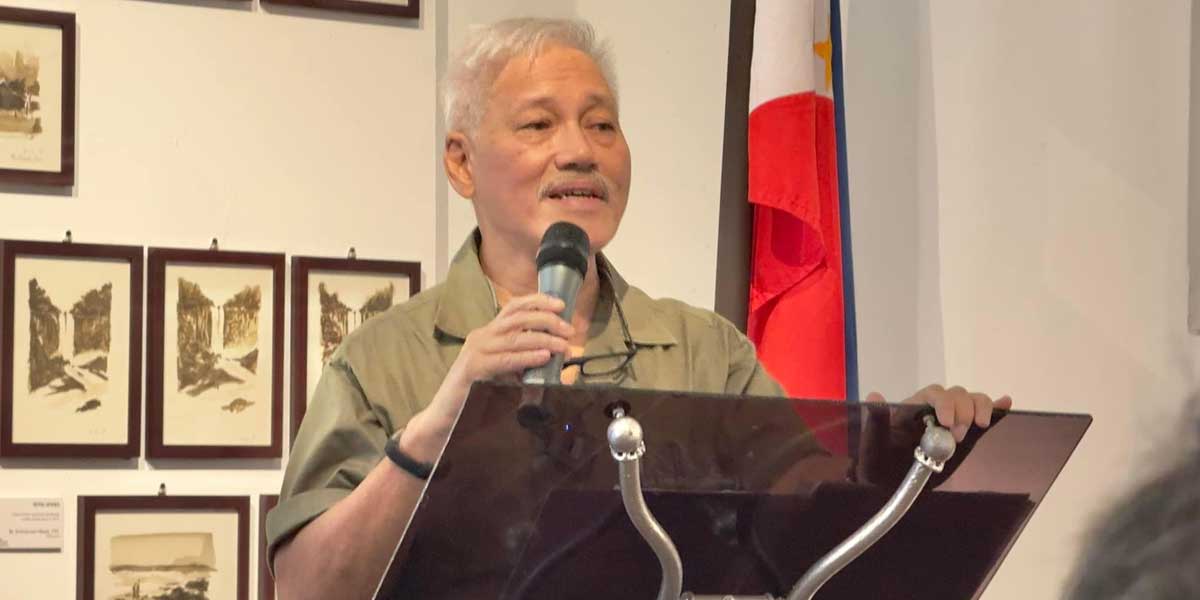By Artchil B. Fernandez
How and why did Italy end up with fascist rule? Why the imminent collapse of capitalism has not occurred? These are some of the questions Antonio Gramsci was grappling with in his lonely prison cell.
Gramsci is one of the original, innovative and influential if not the most influential Marxist thinker of the 20th century. Despite having parliamentary immunity as deputy he was arrested by the fascist government of Benito Mussolini in 1926.
“For twenty years we must stop this brain from functioning,” the prosecutor declared at his trial. Gramsci was given a 20-year imprisonment but after spending 11 years in jail the fascist government released him in 1937 due to poor health condition and in response to international pressure. By the time of his release, Gramsci’s fragile health has considerably deteriorated, and he died shortly at a relatively young age of 46.
The Italian workers and the Left as a whole were ascendant in 1919 and 1920, the “Red Years.” During that time, revolutionary fervor was sweeping throughout the Italian peninsula and it appears Italy is about to follow the path of Russia where the Bolsheviks triumphed in 1917. But a different scenario unfolded. Fascists came to power in 1922 with Mussolini becoming the Il Duce or Supreme Leader of Italy and the workers movement and the Left were violently suppressed.
This unexpected turn of events was the puzzle Gramsci was wrestling with during his imprisonment. He put down his ideas and his take on the puzzle in more than 30 notebooks which were turned into a book first published in 1947, ten years after he died. Gramsci’s Prison Notebooks remains a highly influential work today. Scholars in the field of politics, sociology, culture, international relations, history and related areas continue to scour and mine its pages.
Social condition of Italy during his time preoccupied Gramsci in jail particularly the failure of the workers movement and the Left to take advantage of the deep organic crisis besetting Italy in the years preceding 1920. A fascist victory emerged from the crisis instead of a socialist triumph. “The old is dying and the new cannot yet be born,” Gramsci wrote. But why is this case? This is the Gramscian puzzle.
The Gramscian puzzle confronts the Philippine Left today.
In the Philippines the “old order” has been dying since time immemorial. Marcos senior tried to remedy the situation by declaring martial law in 1972 and established his dictatorship. By 1980s the organic crisis intensified and was accelerated by the assassination of Ninoy Aquino in 1983. To stave off the death of the “old order” the Marcos dictatorship was overthrown by the 1986 EDSA People Power Revolt.
EDSA did not beget the “new order” as trumpeted. Instead, it preserved the “old order” under the guise of liberal democracy. More than 30 years later, liberal democracy floundered under its weight. The “old order” remains at dying stage, yet it refuses to die. The “old order” found a way to survive by jettisoning the liberal project and replaced it with illiberal experiment thus the rise of Du30. In 2022, the Philippines came into full circle with the return of the Marcoses to power. The “old order” while on the throes of death again found a way to stop the “new order” from being born.
Why the “old order” in the Philippines despite in terminal stage cannot be terminated? Why the “new” cannot be born? These are the questions the Philippine Left must grapple with in the same way Gramsci did to understand the Italian situation in the 1920s. The Left is the midwife of the “new order” yet it cannot deliver its birth.
Triumph of the “old order” with the election of BBM is not only due to fake news or misinformation/disinformation and frustration due to the failings of liberal democracy. The failure of the Left – all shades and stripes, to facilitate the birth of the “new order” is another factor that should be accounted for in the BBM win.
For almost a century, the Left has been a key player and major actor in Philippine politics. But in recent decades its influence, clout and impact have noticeably diminished. Wracked by divisions, splits and self-inflicted wounds, the Left while still very much in the limelight saw its national significance waning.
The most telling sign of this development is the failure of the Bayan Muna to win a seat in Congress in the just concluded election, the first time it happened since it joined the electoral contest 20 years ago. Bayan Muna had three seats in 2019. Other left groups like Anakpawis and Akbayan not only did win a seat in the 2022 election, they also lost in the previous election.
While red-tagging and relentless propaganda by the state forces against Left groups is a factor, it is wrong to solely attribute the loss to this. It is time the Left – all formations, must examine themselves and do serious reflection and self-criticism. Why can they not deliver the fatal blow to a dying “old order” and pave the way for the birth of the “new order?” What went wrong or what have they missed?
Philippine society is in a state of perennial crisis with the “old order” on the verge of death, yet the crisis is always successfully hijacked by the ruling elite. The Left on the other hand is unable to exploit the organic crisis to its advantage. This failure of the Left to take advantage of the “interregna” prevented the “old order” from finally expiring.
For the Left to deliver the birth of the “new order” it must confront the Gramscian puzzle. Why the “new order” cannot be born? What hinders its birth? Unless the Left resolves the Gramscian puzzle, the dying “old order” will persist, the organic crisis deepens, and the “new order” remains entomb in its womb.




















